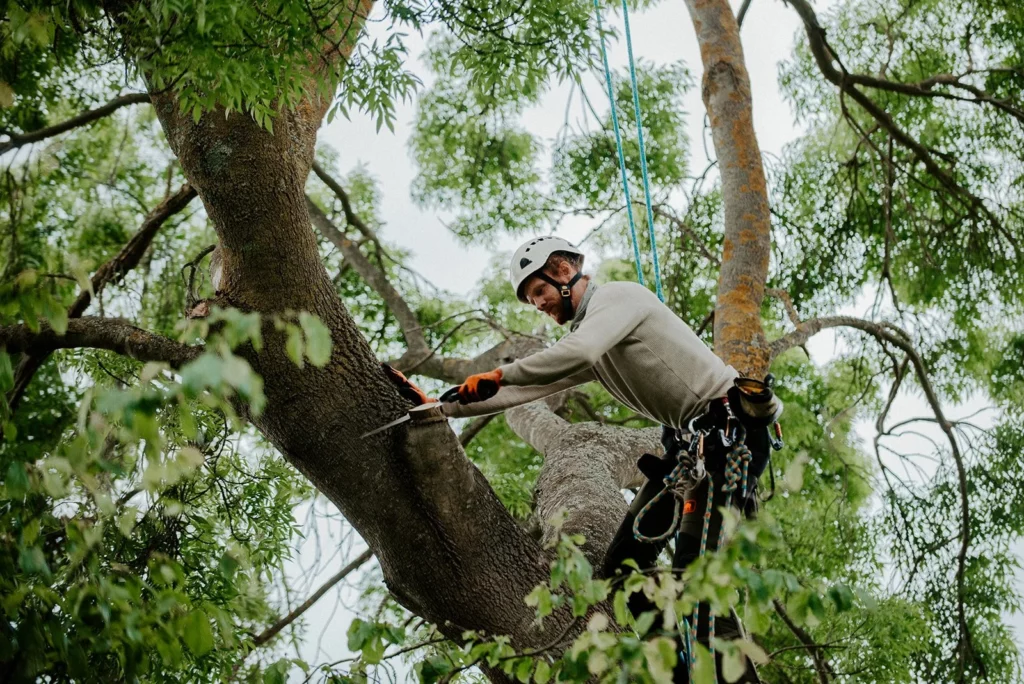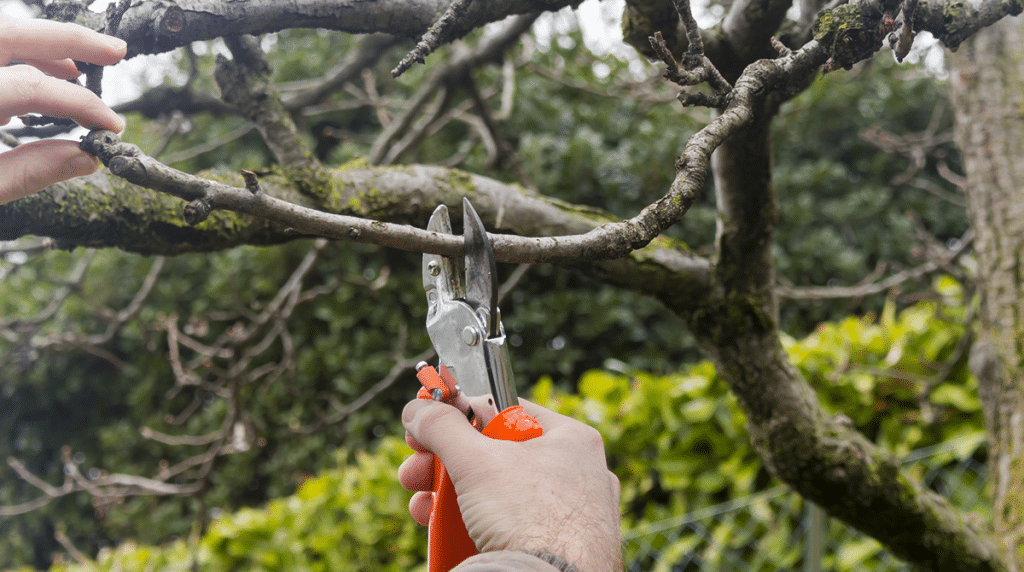Understanding Tree Pruning Cost Before You Hire
What Are the Key Factors That Influence Tree Pruning Cost Before You Hire?
Understanding tree pruning cost requires examining multiple variables that directly affect your final bill. The price you’ll pay depends on a combination of physical characteristics, service requirements, and environmental conditions that arborists must navigate during the job.
How Does Tree Size Impact Pruning Cost?
Tree size serves as the primary cost determinant for pruning services. Larger trees demand more time, specialized equipment, and increased safety measures, which translates to higher expenses.
Small tree pruning cost typically ranges between $250 and $400 for trees reaching up to one storey in height. These jobs are straightforward and require minimal equipment.
Medium trees spanning two storeys and above cost between $350 and $550. The additional height necessitates extended ladders or bucket trucks, increasing both labor time and complexity.
Large tree pruning price escalates significantly for three-storey trees, ranging from $600 to $1,000. These require professional climbing equipment and advanced safety protocols.
Mature tree trimming for extra-large specimens exceeding six storeys commands premium pricing from $900 to $2,000 or more. These giants present substantial challenges, requiring experienced arborists, crane assistance in some cases, and extensive time commitments. The sheer volume of branches and the precision needed to maintain structural integrity justify the elevated investment.
2. What Types of Pruning Services Are Available and How Do They Affect the Price?
Different pruning techniques serve distinct purposes and come with varying price points.
- Dead limb removal ranks as the most affordable option, typically recommended annually to maintain tree safety and health.
- Crown thinning involves selective removal of smaller branches throughout the canopy, allowing better light penetration and air circulation at a moderate cost.
- Crown reduction requires trimming the entire crown structure to decrease overall size and weight, making it more expensive due to the extensive work involved.
- Crown lifting removes lower branches to create clearance beneath the tree, with pricing dependent on how much material needs removal.
- Pollarding represents the most specialized and costly service, as arborists must carefully remove most branches while preserving the main limbs—a technique requiring exceptional skill and precision to avoid permanent tree damage.
3. How Do External Conditions Like Weather Influence Pruning Costs?
Weather conditions directly affect both the complexity and duration of pruning work, which translates to higher costs. Heavy winds make climbing dangerous and require additional safety measures, while rain creates slippery conditions that slow down the entire process. Arborists may need to pause work during thunderstorms or extreme heat, extending the job timeline.
Key weather-related cost factors include:
- Wind conditions: Strong gusts require extra safety equipment and slower, more cautious work
- Rain and moisture: Wet bark becomes slippery, increasing risk and reducing work speed
- Extreme temperatures: Heatwaves or cold snaps limit safe working hours per day
- Storm aftermath: Damaged or stressed trees need more careful assessment and handling
These external cost factors mean the same pruning job might cost significantly more during challenging weather periods. Arborists often build weather contingencies into quotes for large tree pruning price estimates, particularly for mature tree trimming projects that span multiple days.
4. Are There Any Additional Costs to Consider Beyond Basic Pruning Expenses?
Green waste removal fees are one of the most common extra costs in tree pruning projects. Most arborists include debris disposal in their quotes, but some offer lower base rates if you handle the cleanup yourself. Expect to pay extra for this service, which can add a significant amount to your final bill depending on the amount of branches and leaves removed.
Council approval for pruning may be needed before work starts, especially for heritage-listed trees or properties in protected areas. Application fees vary by municipality and can delay your project timeline. Some local councils impose fines for unauthorized pruning of important trees, making it crucial to check regulatory requirements before hiring an arborist. Your chosen professional should identify whether permits are necessary during the initial assessment.

Why Is It Important to Hire a Professional Arborist for Tree Pruning?
How Does Expert Knowledge Contribute To Safe And Effective Pruning?
Hiring a professional arborist offers benefits that go beyond just trimming branches. These trained experts have in-depth knowledge of tree biology, growth patterns, and structural integrity—all of which directly influence the results of pruning.
Their skills enable them to determine which branches can be safely removed without harming the tree’s overall health or stability. An arborist understands how different types of trees react to pruning cuts and can decide when is the best time to intervene. They are also able to spot signs of disease, pest infestations, and structural weaknesses that an untrained person might overlook.
Safety is another important reason why professional arborist benefits are so valuable. When working at heights with sharp tools near power lines, specific equipment and techniques are necessary. Arborists have the right insurance coverage in place, protecting homeowners from any liability if accidents happen during the job.
The technical side of compliant tree pruning requires knowledge about proper cutting angles, preserving branch collars, and distributing weight correctly. Making incorrect cuts can create openings for pathogens or cause branches to tear—resulting in extensive damage. Professionals know how to make precise cuts that promote quick healing and minimize stress on the tree.
Before hiring someone, it’s crucial to understand the cost of tree pruning. This means realizing that professional expertise can help avoid expensive mistakes. If a tree is pruned incorrectly, it may require additional work, become unhealthy over time, or even die—costs that will far exceed any initial savings from choosing inexperienced services.
2. Why Is Compliance With Local Council Rules Essential In Tree Pruning Work?
Many councils enforce strict regulations on tree pruning, especially for heritage-listed trees, protected species, or trees above certain heights. Compliant tree pruning protects you from fines that can reach thousands of dollars and potential legal action for unauthorized work.
Professional arborists navigate these regulations daily and understand which trees require permits before pruning. They know the specific documentation needed, the approval timelines, and the pruning restrictions that apply to different tree types. Some councils prohibit pruning during bird nesting season or limit how much canopy can be removed.
Attempting DIY pruning without checking local rules can result in:
- Substantial penalties for removing protected vegetation
- Requirements to plant replacement trees at your expense
- Legal disputes with neighbors if trees are on boundary lines
- Reduced property value due to unauthorized tree damage
An experienced arborist handles permit applications and ensures all work meets council standards, saving you from costly compliance issues down the track.
How Can You Ensure Accurate Quotes When Requesting Pruning Services?
Getting precise quotes requires providing arborists with comprehensive details about your trees and property conditions. The more specific information you share upfront, the less likely you’ll encounter unexpected charges or revisions to your initial estimate.
What Specific Information Should You Provide About Your Trees?
Tree species details form the foundation of accurate cost estimates. Different species have distinct growth patterns, wood density, and structural characteristics that directly affect pruning complexity. An arborist needs to know whether they’re dealing with a brittle eucalyptus or a dense oak, as this determines the equipment required, time investment, and safety precautions necessary.
When requesting quotes, provide these essential details:
- Species name (common or botanical)
- Height (measured in storeys or metres)
- Canopy width and overall spread
- Trunk diameter at chest height
- Current health status and visible issues
- Previous pruning history
Site access information proves equally critical for quote accuracy. Arborists must understand how their team and equipment will reach your trees. A property with narrow side gates, overhead power lines, or steep slopes requires specialized equipment and additional labour hours. Trees surrounded by garden beds, pools, or structures need careful planning to prevent damage during the pruning process, which influences both methodology and pricing.
2. How Does Site Accessibility Impact Quoting Accuracy?
Site access information directly determines equipment choices and labor requirements for your pruning project. Arborists need to know whether their vehicles can park near the tree, if power lines obstruct the work area, or if narrow pathways restrict equipment movement.
Properties with limited access points require manual labor instead of machinery, increasing both time and costs. A tree surrounded by fences, buildings, or gardens means workers must carry equipment by hand and lower branches carefully to avoid damage. Steep terrain adds another layer of complexity—arborists may need specialized rigging systems or additional crew members for safety.
Accurate site access information helps professionals determine:
- Whether bucket trucks or cranes can reach the work area
- If climbing equipment becomes necessary
- How debris will be removed from the property
- What safety measures the terrain demands
Providing photos of access routes, driveway widths, and surrounding obstacles enables arborists to prepare appropriate equipment and quote realistic timeframes for your specific situation.
How Regular Tree Pruning Saves You Money in the Long Run
Taking care of your trees isn’t just about making your property look nice—it’s also a smart financial move. When you regularly prune your trees, you’re actually saving money in the long run. Here’s how:
1. Lower Tree Care Costs
Property owners who make it a point to prune their trees regularly spend significantly less on tree care compared to those who ignore maintenance. In fact, studies show that people who invest in consistent pruning typically spend 40-60% less on tree care than those who neglect maintenance and end up facing emergency situations.
Why is this the case?
When you take proactive steps to care for your trees, you’re preventing potential problems from arising. This means that instead of dealing with expensive crisis interventions later on, you’re investing in preventative care upfront.
2. Avoiding Costly Repairs
One of the biggest benefits of regular tree pruning is that it helps prevent damage to your property. Over time, neglected trees can become weak and unstable, making them more susceptible to falling during storms or high winds.
By hiring a professional arborist to prune your trees annually, you can identify and fix any structural issues early on. This not only keeps your trees healthy but also protects your home, vehicles, and other structures from costly repairs.
Think about it this way:
A $300 annual pruning session can save you thousands of dollars in repair costs down the line. If a fallen branch were to damage your roof or power lines, for example, you’d be looking at expenses that far exceed what you spent on maintenance.
3. Enhancing Property Value
Well-maintained trees can significantly enhance the value of your property. Potential buyers are often drawn to homes with beautiful landscapes and healthy greenery.
By investing in regular tree pruning, you’re not only maintaining the current value of your property but also increasing its appeal to future buyers. This can be particularly beneficial if you ever decide to sell your home.
Conclusion: Understanding Tree Pruning Cost Before You Hire
Before hiring a professional for tree pruning services, it’s important to have a clear understanding of the costs involved. This includes not only the fees associated with each session but also any potential expenses you’ll be avoiding as a result of preventative care.
When calculating these avoided expenses as part of your long-term property investment strategy, keep in mind factors such as:
- Repair costs for damaged roofs or vehicles
- Expenses related to power line disruptions
- Any other incidents that could arise from neglected trees
By factoring in these costs alongside the price of regular maintenance, you’ll gain a more comprehensive view of how tree pruning contributes to your overall financial well-being.
2. Why Is Proactive Maintenance More Cost-Effective Than Reactive Measures Later On?
Regular tree maintenance benefits far outweigh the expense of emergency interventions. Catching structural weaknesses early through routine inspections costs significantly less than emergency tree removal, which can reach $2,000 or more for large specimens. Small pruning jobs starting at $250 prevent branches from becoming hazardous limbs requiring specialized equipment and extended labor hours.
The long-term financial implications become clear when comparing preventive care to crisis management. A dead branch removed during scheduled maintenance might cost $75, while waiting until it damages property or injures someone multiplies expenses through repair bills, insurance claims, and potential legal costs. Trees receiving consistent attention rarely develop the severe decay or structural failures that necessitate complete removal—a service that typically costs double or triple the price of routine pruning work.
How Long Should You Expect A Typical Tree Pruning Job To Take?
The time it takes to prune a tree depends mainly on its size and how complicated the job is. Generally, a small tree with no risks involved will take about 15 to 30 minutes to prune. On the other hand, a large mature tree located close to buildings or power lines may require an entire day or even longer for safe pruning.
What Are The Estimated Timeframes For Small Vs Large Trees During A Pruning Project?
Here’s a breakdown of estimated timeframes for different sizes of trees during a pruning project:
Small trees (up to one storey high): These trees usually take around 15 minutes to 2 hours for completion. Since arborists can often work from the ground using pole saws and hand tools, these jobs tend to move quickly. The limited size of the canopy means there are fewer branches to assess and remove, resulting in faster turnaround times.
Medium-sized trees (two storeys high): Pruning properly typically requires 2 to 4 hours for these trees. Arborists may need climbing equipment or elevated work platforms to safely reach higher branches. The increased height and density of branches necessitate more careful planning and execution.
Large trees (three storeys and above): Depending on specific circumstances, these projects demand anywhere from 4 to 8 hours or more. Extensive climbing, rigging systems used for safely lowering heavy branches, and meticulous attention given throughout the canopy’s structure are all part of the process.
Extra-large trees (over six storeys): An entire workday may be consumed by these trees, or it could extend across multiple days. The sheer scale of such specimens, combined with safety considerations regarding nearby buildings, roads, or utilities slows down the pace considerably.
Several factors can also impact how long pruning will take beyond just considering size:
- Proximity to obstacles: Trees situated near power lines, buildings, or traffic require careful rigging techniques and controlled lowering methods for branches
- Tree health: Diseased or damaged trees need additional assessment time so that weak points can be identified
- Access limitations: Difficult terrain or restricted entry points slow down both equipment setup as well as debris removal processes
- Weather conditions: Windy weather conditions along with rainstorms or extreme heatwaves may temporarily halt work due safety reasons
- Pruning type: Crown reduction techniques used during pruning sessions tend take longer compared simple dead limb removals
Understanding these various timeframes will help you better plan around any disruptions caused by ongoing projects while also appreciating why professional arborists charge different rates depending on tree sizes being worked upon.

2. How Do Hazards And Obstacles In The Surroundings Affect Job Length Estimates?
Nearby hazards and obstacles can dramatically extend pruning time estimates beyond the baseline for tree size alone. A small tree in an open yard might take 15 minutes, but the same tree near power lines or traffic could require several hours due to safety protocols and careful maneuvering.
Common obstacles that increase job duration include:
- Power lines requiring specialized equipment and coordination with utility companies
- Buildings and structures limiting equipment placement and branch drop zones
- Traffic areas necessitating road closures, traffic management, and heightened safety measures
- Fencing or narrow access points restricting crane or lift usage
- Underground utilities requiring hand-digging verification before stabilizer placement
Arborists must work slower and more deliberately when hazards are present. What might be a straightforward crown thinning job becomes a meticulous operation requiring rigging systems to lower branches piece by piece rather than allowing natural drop. This precision work directly impacts pruning time estimates and consequently your final bill.
When requesting quotes, clearly identify all surrounding obstacles. Photos showing proximity to structures, overhead wires, and access routes help arborists provide accurate timeframe projections. The small versus large trees comparison becomes less relevant when environmental hazards dominate the complexity equation—a small tree in a challenging location can exceed the time and cost of a large tree in open space.
More about How Expert Tree Pruning Services Improve Growth and Safety


